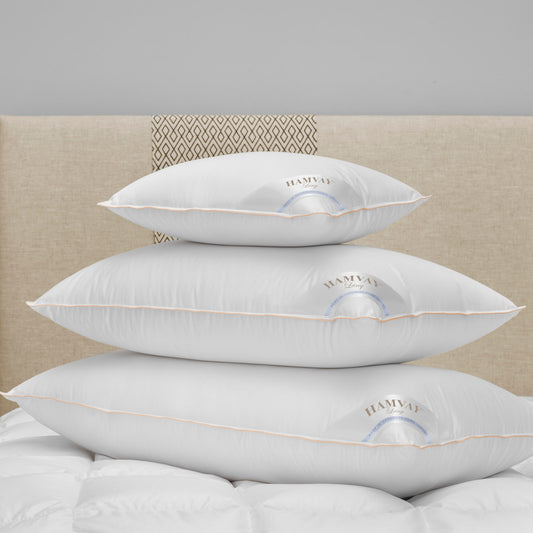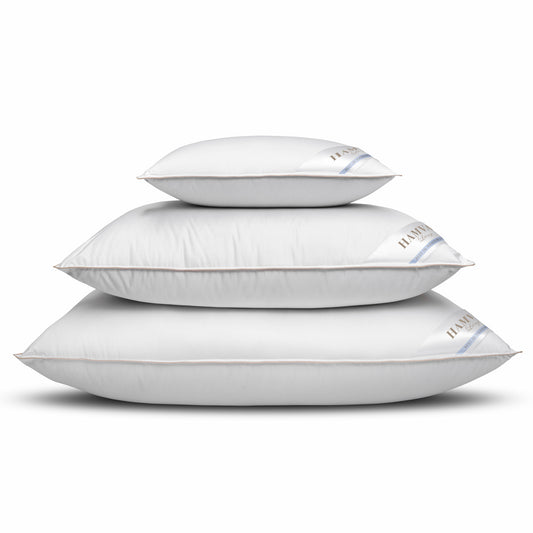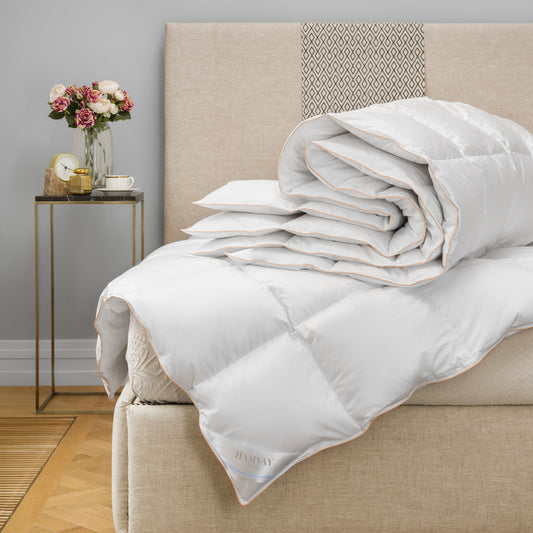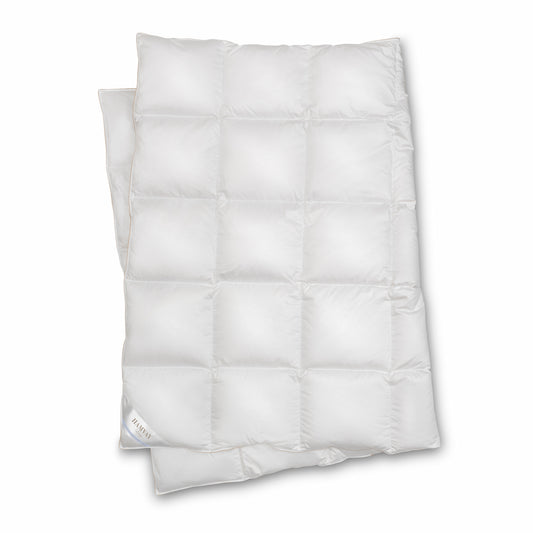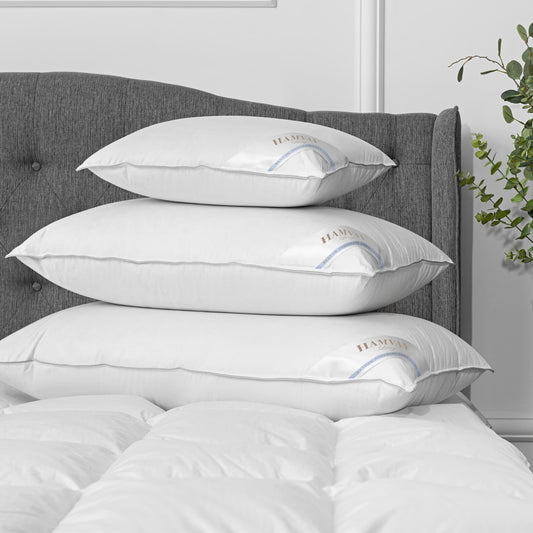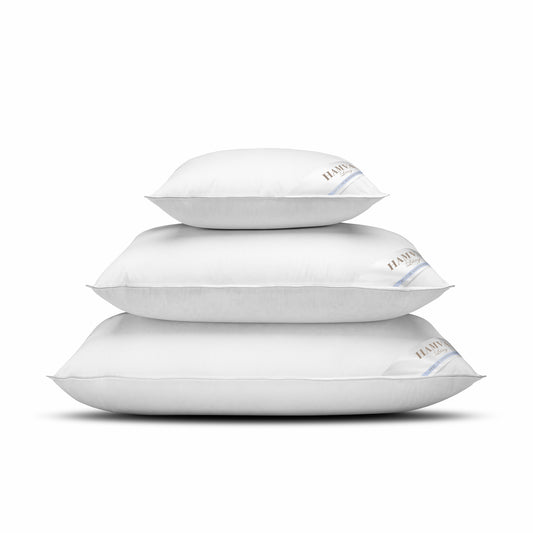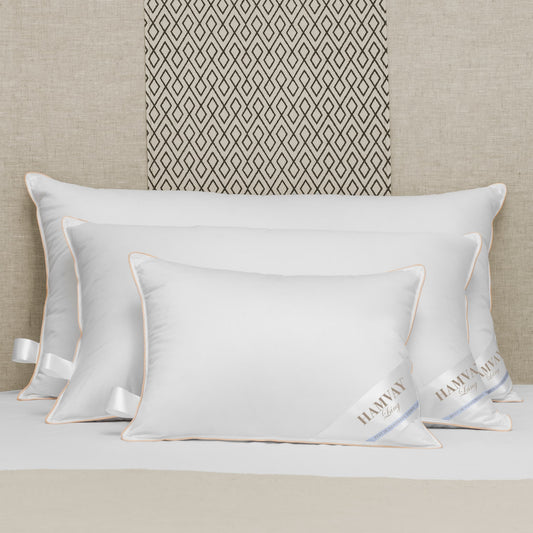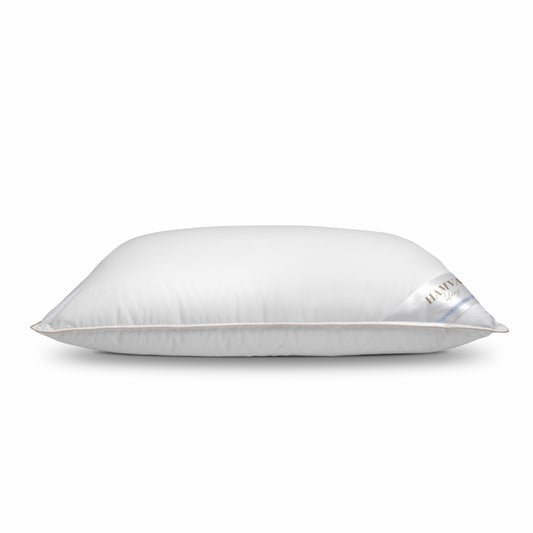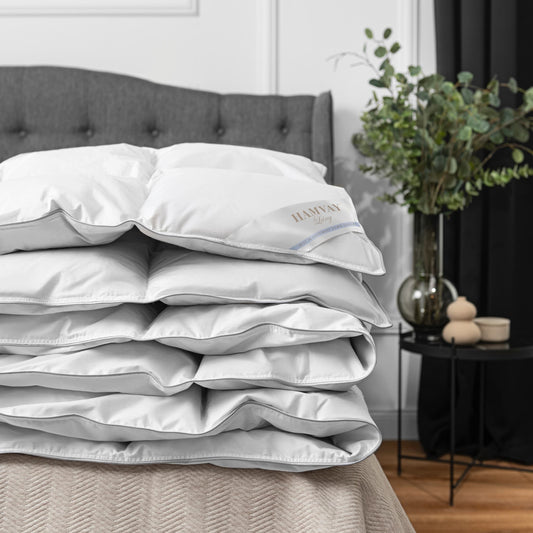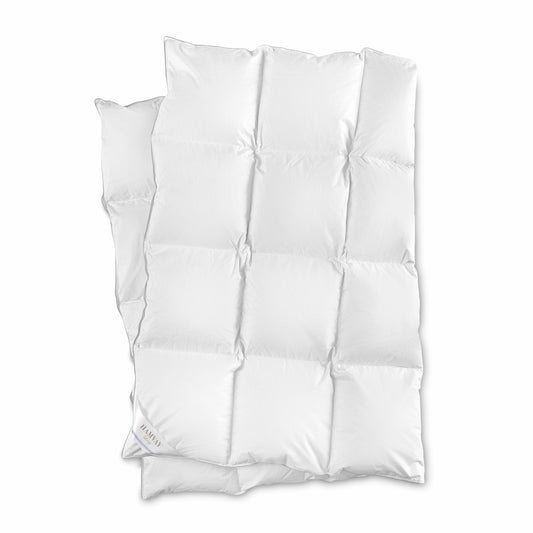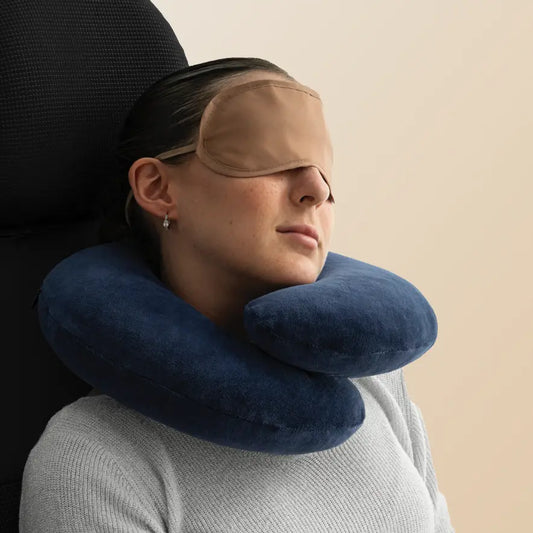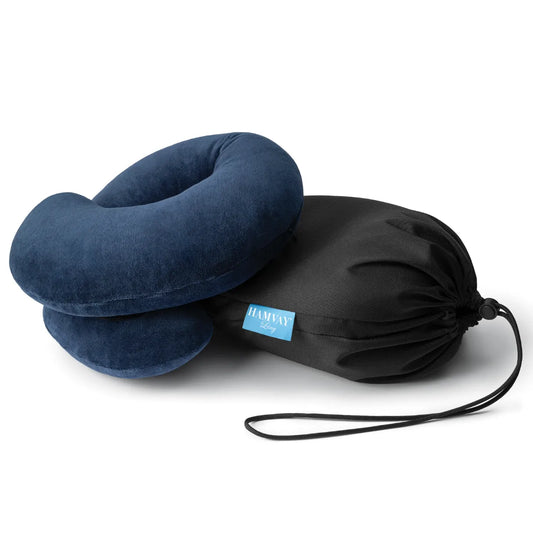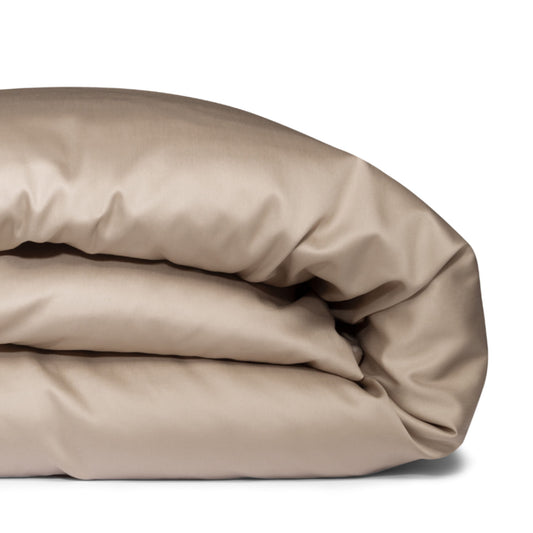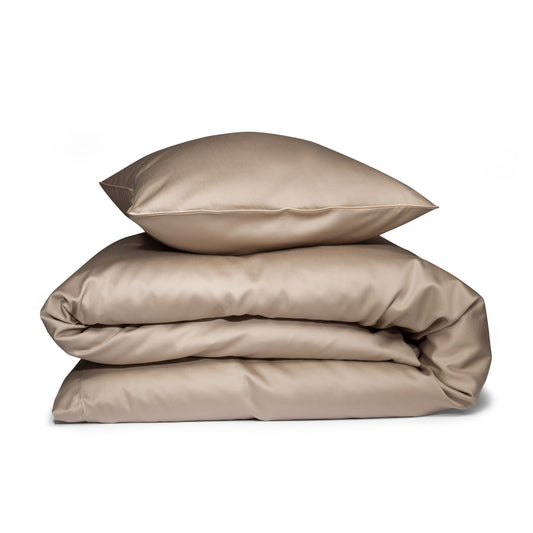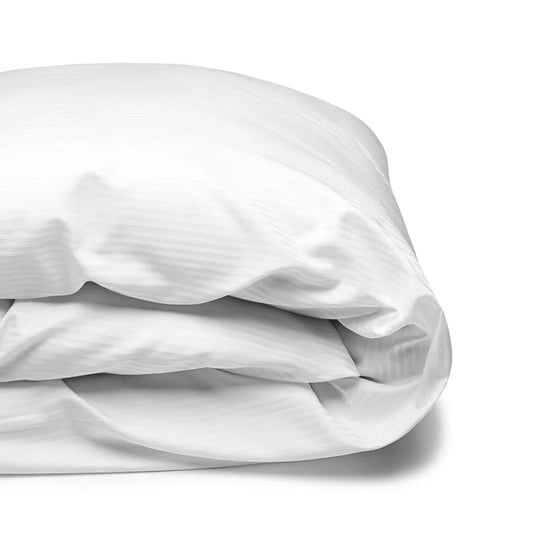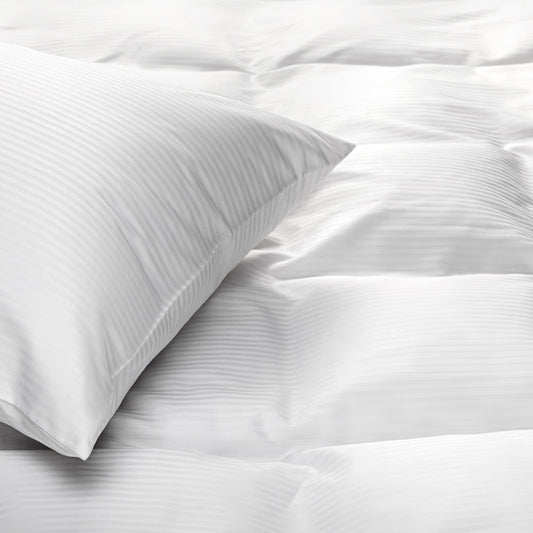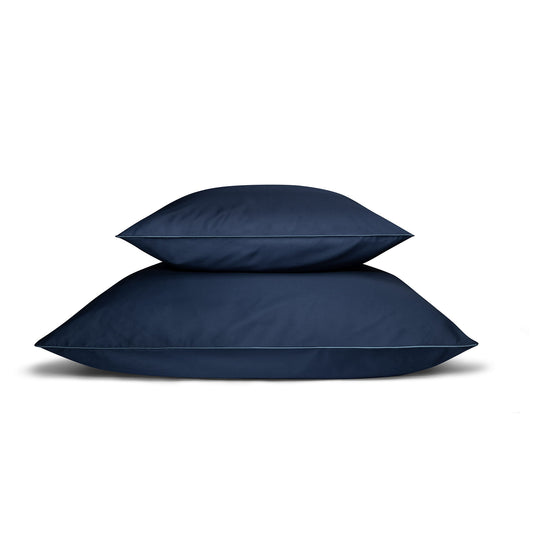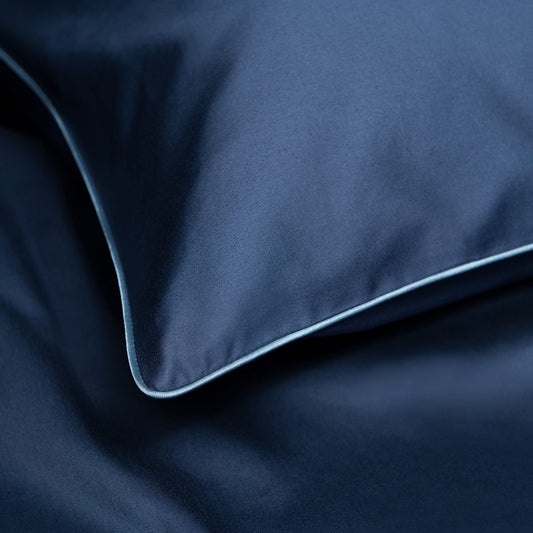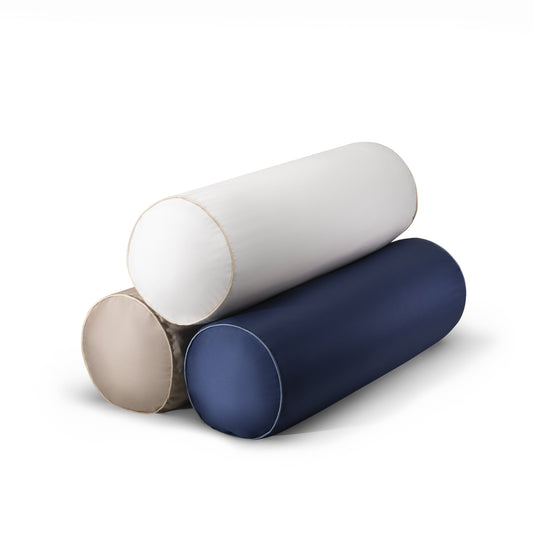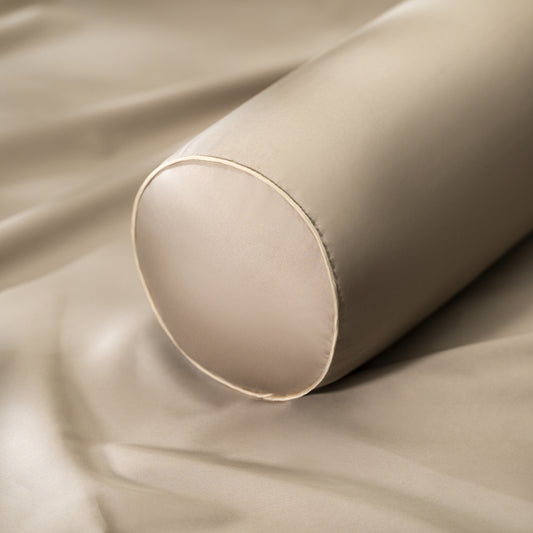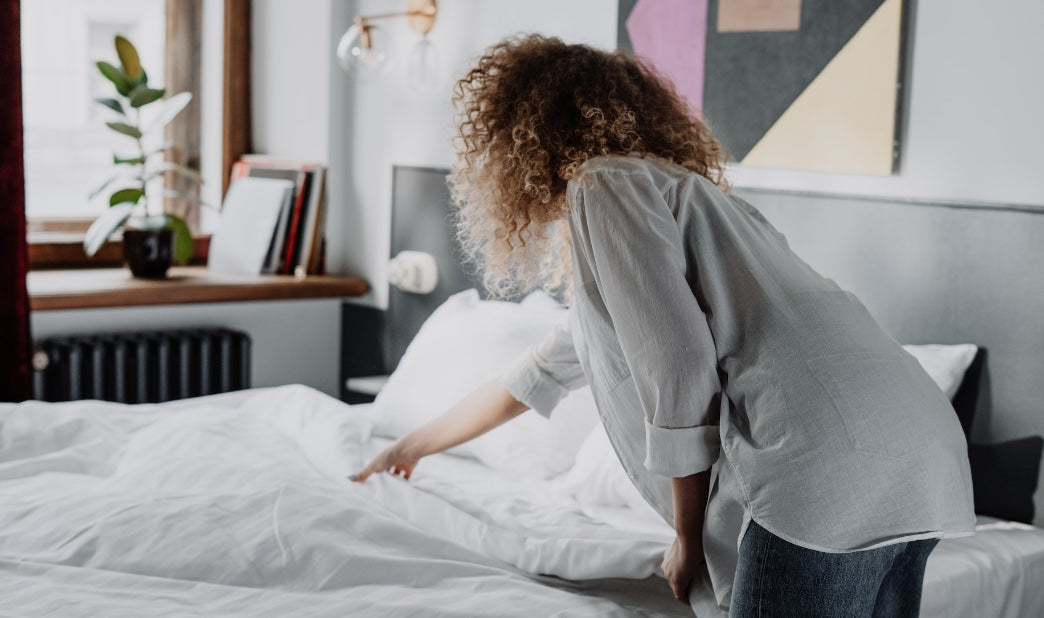
Comforter Sizes Chart – Everything You Need to Know
Share
Comforters are great bedding elements that provide warmth, comfort, and insulation. However, choosing the right comforter size can get tricky. The non-standardized sizes and different measurements often lead to confusion. Fortunately, with a few DIY measurements of your mattress, you can make comforter shopping much easier. This article will provide you with a detailed overview of the importance of bedding and tips on how to choose the best option according to your preferences.
What Is Bedding?
Bedding, bedclothes or bed linen, refers to materials laid above the mattress on a bed. The bedding can be removed and washed at any time. The primary purpose of the bedding is to protect the mattress, promote hygiene, provide warmth, and serve a decorative purpose.
How does Bedding Affect Sleep?
Bedding is often overlooked when considering factors that affect sleep. However, when you think about it, you spend almost a third of your life sleeping on bed linen. Investing in good bedding, therefore, can quickly improve your sleep and quality of life.
Imagine slipping into soft, fresh, and fine-smelling cotton sheets after a long day at work. The sense of comfort and warmth will relax you and make falling asleep much easier.
Good bedding is crucial when it comes to comfort, warmth, and insulation. Bed linen isn’t replaced as often as clothes, but it’s important to keep it clean and washed for maximum benefits.
Factors to Consider for the Bedding Purchase
- Comfort
- Quality
- Price
- Breathability
- Thread count
- Hypoallergenic features
- Size
- Material
- Color and style
Everything You Need to Know About Comforters
Comforters can make your life so much better. But only if you purchase the right comforter for your particular needs and bedding.
As far as materials are concerned, there are multiple factors to consider. If you’re prone to allergies, go for a hypoallergenic option. For sleepers who tend to get hot at night, find a lightweight and breathable material.
On the other hand, the fill power plays a significant role in comfort and warmth. The higher the fill power, the warmer the comforter. The fill volume also plays a role and refers to the volume that an ounce of material takes up. Be careful not to go for comforters with too much fill power and volume because they can leave you too hot.
Here’s an overview of things to consider when choosing a comforter for your bed:
- Thread count – the higher the thread count, the more solid the fabric becomes (average thread count is from 200 to 405)
- Fillers (cotton, down, feather, wool, silk)
- Fill power and volume for warmth
- Pattern and color for decorative purposes
- Cleaning and maintenance – can the comforter be washed in a washer, or does it need dry cleaning?
- Sizing – note that comforters are bigger than mattresses
Comforter Sizes Chart – A Useful Guide

Choosing the right comforter size can be the most complicated factor. Most U.S. mattress sizes come in standard dimensions, while the comforters don’t.
Also, many bedding manufacturers use the exact dimensions for queen-size and full-size comforters. But not all of them.
You may also find that twin comforters come in different lengths and widths, depending on the brand.
Different Bedding Sizes
- Crib: 28 by 59 inches for mattresses, 28 to 36 inches for standard comforter widths, and 46 to 52 inches for standard comforter lengths
- Twin: 39 by 75 inches for mattresses, 66 to 68 inches for standard comforter widths, and 86 to 88 inches for standard comforter lengths
- Twin XL: 39 by 80 inches for mattresses, 68 inches for standard comforter widths, and 90 inches for standard comforter lengths
- Full (Double): 54 by 75 inches for mattresses, 81 to 84 inches for standard comforter widths, and 86 to 88 inches for standard comforter lengths.
- Queen: 60 by 80 inches for mattresses, for standard comforter widths, and 96 to 100 inches for standard comforter lengths
- King (Eastern King): 76 by 80 inches for mattresses, 102 inches for standard comforter widths, and 86 to 88 inches for standard comforter lengths.
- California King (Western King): 72 by 84 inches for mattresses, 107 to 110 inches for standard comforter widths, and 96 to 98 inches for standard comforter lengths
The baby comforter size ranges from 48 to 52 inches long and 28 to 36 inches wide. The baby comforters can be used as duvets, blankets, crib blankets, swaddle blankets, etc.
Different Comforter Sizes
- Junior size
- Twin size
- US Twin size
- Full (Double) size
- Queen size
- King size
Note that the sizes for comforters aren’t standardized. Different manufacturers may include different sizing comforters and label them as Full Size, for example.
Choosing a Perfect Size Comforter
When choosing the right comforter size, it’s essential to consider several factors:
- Mattress thickness (9 to 12 inches)
- (Optional) Drape length (the longer the drape, the larger the comforter should be)
- Bed frame height (higher bed frames need oversized comforters)
Note that pillow top mattresses and extra layers make thicker mattresses. They will require comforters with extra width so they can hang down on the sides of the mattress. In this case, go with oversized comforters because they provide more width without adding extra length.
How Should a Comforter Fit in a Bed
Ideally, a comforter should drape over your bed’s edges but not touch the floor. Otherwise, it will get dirty fast. Most people choose comforters that cover their bed frame at the very least. It all depends on your personal preference, of course.
Pro Tip: Keep at least one-third or one-half of the skirt visible if your mattress is on a box spring with a bed skirt.
Measuring Your Mattress
Measuring your mattress is easy. Simply add the length and thickness of each side of the bed. For example, for a queen-size mattress that’s 60 inches wide and 12 inches high. Hence, you want to go for a 60+12+12 = 84 inches wide comforter.
Take a quick measurement before shopping to ensure the new bedding cover will comfortably cover the sides of the bed.

Choosing the Right Bed Linen – How Beddings Are Different
Quilts
Quilts usually have three fiber layers: a woven cloth top, a batting layer, and a woven back. All parts are stitched in decorative patterns. Quilts are different from other bed covers as they often have a single piece of fabric on top, while other bed covers feature many.
Manufacturers love to include traditional and classic patterns on top of the quilts. People often purchase them to mark important events like childbirth, marriage, graduation, etc.
Coverlets
Coverlets are lightweight bedspreads that can be woven or quilted. They are often decorative and placed over thicker bedspreads. The coverlets have a thin batting layer, so they can be used as standalone bed covers or throws on a sofa.
Duvet covers
Duvet covers are available in many fabrics like cotton, bamboo, upholstery fabric, etc. The primary purpose of a duvet cover is to protect the duvet. They also serve a decorative purpose. People love duvet covers because they are simple and attractive.
Comforters
Comforters usually have dyed colors and patterns that aren’t embroidered. Comforters consist of multiple layers of material like polyester batting made from synthetic fibers, down, feathers, and silk or wool. The thickness of the filling can impact the weight and insulation level of a comforter. But more on comforters below.
Hamvay-Láng - Luxurious comfort
Looking for the ultimate comforter? Look no further than Hamvay-Láng comforters. Renowned for their exquisite craftsmanship and use of premium materials, Hamvay-Láng offers a range of comforters that redefine the concept of a restful night's sleep. Each comforter is meticulously designed to provide the perfect balance of warmth and breathability, ensuring that you stay cozy without overheating.
With a variety of sizes, Hamvay-Láng makes it easy for customers to find the perfect fit for their bedding needs, all while providing top-notch customer service and a commitment to satisfaction. If you are looking for a tailor-made comforter, Hamvay-Láng offers custom-made options for those who seek a truly personalized bedding experience.
Comforter Shopping Made Easy

Shopping for a comforter doesn’t have to be a complicated task. As long as you know your bed size, mattress dimensions, and preferred style or pattern, you’ll have an easy time finding the best comforter for your needs.
Remember to keep in mind your mattress’s size and thickness given that these two factors affect the ideal width of the comforter. Once you have these measurements, all you have to do is compare the measurements and get a comforter that best matches the given dimensions.
